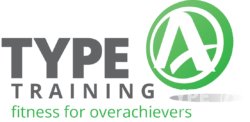Looking to take your strength training up a notch? The Madcow 5×5 program could be just what you need.
It’s built for intermediate lifters who’ve squeezed out their beginner gains and want more. Smart progression helps you keep building strength when basic linear programs stop delivering results.

Madcow 5×5 gives you three full-body training sessions each week, all focused on compound barbell lifts. Every workout follows a ramping 5×5 format, building up to your heaviest set of the day.
Popular posts:
You bump the weights up by about 2.5% each week. This structured approach balances intensity and volume, great for anyone who’s lifted consistently for 6-12 months or more.
What sets the Madcow program apart is its base in Bill Starr’s old-school training mixed with modern tweaks. The plan alternates between heavy, light, and medium days, so you recover properly but still get enough challenge to keep growing stronger.
Key Takeaways
- Madcow 5×5 uses three weekly workouts with compound exercises and ramping sets, making it efficient for intermediate lifters.
- You’ll see steady progress with roughly 2.5% weight bumps each week, often hitting new 5-rep PRs by week 5.
- Its mix of volume and intensity, plus alternating workout difficulties, means you recover well but still build muscle and strength consistently.
Overview of the Madcow 5×5 Program

Madcow 5×5 is a structured program for intermediate lifters who’ve hit a wall with beginner routines. It’s all about compound barbell moves and a progression system that helps bust through plateaus.
Origins and Background
Legendary strength coach Bill Starr inspired the Madcow 5×5 program. Glenn Pendlay, an Olympic weightlifting coach, later refined and popularized it.
The quirky name came from an online forum user who formalized the routine. Instead of adding weight every workout like beginner programs, Madcow 5×5 switches to weekly progression.
That makes it a solid choice for lifters who’ve outgrown their novice gains and need a more sustainable plan. Since the early 2000s, lifters have kept coming back to Madcow for its simplicity and results.
A lot of folks move to Madcow when StrongLifts 5×5 or Starting Strength stops working for them.
Core Principles
Madcow 5×5 centers around three full-body workouts each week and five big compound exercises: squats, bench press, deadlifts, overhead press, and bent-over rows.
You’ll use a 5×5 rep scheme for most lifts, sometimes with slight tweaks. The program uses linear periodization—heavy, medium, and light days each week.
Weights go up weekly, not every session, which is way more manageable for intermediate lifters. Instead of straight sets, you ramp up the weight each set, with only the last set being the heaviest.
Monday and Friday are your heavy hitters, while Wednesday is lighter for recovery. This keeps burnout at bay and lets you keep getting stronger.
Key Lifts and Workout Structure
Madcow 5×5 is built around fundamental barbell lifts that hit multiple muscle groups at once. These compound moves are the backbone of the program, which runs three days a week.
Squat and Bench Press Emphasis
Squats and bench press are the real stars in Madcow 5×5. Both show up several times a week to drive your strength gains.
You’ll squat every session. Monday is heavy, ramping up to your top set of five. Wednesday is lighter at 80% of Monday’s weight. Friday is for new personal records.
Bench press happens twice weekly:
- Monday: 5 ramping sets, working up to your heaviest
- Friday: 4 ramping sets, then a PR attempt with 2.5% more weight
Seeing these lifts often helps you get stronger faster but still gives you enough time to recover. The plan’s progressive overload helps you keep adding weight, which is what most intermediate lifters really need.
Deadlift and Power Cleans
You’ll deadlift just once a week, usually on Friday. Deadlifts are brutal on recovery, so this is a smart move.
Here’s how deadlifts work:
- Single heavy set: After warming up, you do one set of 5 heavy reps.
- Weekly progression: Add about 2.5% to the bar each week.
Some Madcow variations swap in power cleans for rows or as extra work. Power cleans build explosive strength and teach you to move weight fast.
Deadlifts and your heaviest squats both land on Friday. This groups the toughest lower-body lifts together, so you get the hardest work done in one shot and have the weekend to recover.
Don’t get sloppy with deadlift form—less volume, heavier weights, so technique matters.
Overhead Press and Bent Over Row
The overhead press and bent-over row fill out the core lifts in Madcow 5×5. These moves build upper body strength and balance out all the pressing.
You’ll usually overhead press on Wednesday, following the same ramping 5×5 pattern. This move hits your shoulders, triceps, upper chest, and even your core.
Bent-over rows are in there twice a week:
- Monday: 5 sets of 5, ramping up
- Friday: 4 sets of 5, then a PR attempt
Rows help balance out the pressing by working your back, rear shoulders, biceps, and forearms.
Like the other lifts, you’ll bump the weight by about 2.5% each week. Alternating push and pull keeps your development balanced and helps fend off injuries.
Compound Movements in Madcow 5×5
Madcow 5×5 sticks strictly to compound lifts—no isolation fluff here. That means you get more done in less time.
Why compound lifts rock:
- They activate more muscle per exercise
- You get a bigger hormonal response
- Functional strength goes up
- Workouts are more efficient
- You burn more calories
A typical week looks like this:
| Day | Primary Movements |
|---|---|
| Monday | Squat, Bench Press, Row |
| Wednesday | Squat (lighter), Overhead Press, Row or Assistance |
| Friday | Squat, Bench Press, Deadlift |
Each exercise ramps up in weight, starting light and finishing heavy. This warms you up and gets your nervous system ready for the big lifts.
Instead of one-rep maxes, submax testing sets your five-rep max for each lift. It’s safer and just makes more sense for most people.
Progression, Volume, and Periodization
Madcow 5×5 relies on smart weight jumps and balanced volume so intermediate lifters can keep making progress. The progression patterns are designed to avoid plateaus without burning you out.
Linear Progression and Weight Increases
Madcow 5×5 uses a steady 2.5% weekly increase for all your major lifts. That’s just right for lifters who can’t add weight every session but still have room to grow.
You’ll want to start with about 90% of your five-rep max for each lift. This gives you some runway before you hit a wall. Say your 5RM squat is 300 pounds—you’d start with 270 as your top set.
With linear periodization, you build toward a new 5-rep PR by week five, then keep nudging the weights up. It’s a much smoother ride than old-school daily progression.
Understanding Training Volume
Madcow 5×5 keeps the volume moderate—enough to spark growth, not so much that you can’t recover. Each lift uses a ramping pattern, not straight sets.
Monday and Friday are your big volume days, with 5×5 ramping sets on the main lifts. The first four sets lead up to the heavy fifth set.
This structure takes some pressure off your joints but still gets the job done. Bench press volume isn’t as high as pure powerlifting routines, but it’s plenty for steady gains.
Wednesday is lighter at 80% of Monday’s weights. It’s active recovery and keeps your technique sharp.
Accessory moves like rows, dips, and extensions add just enough extra work without wrecking your recovery. The overall volume lands right in the sweet spot for intermediates.
Weekly Structure and Rest Days
You’ll train Monday, Wednesday, and Friday, with four rest days each week. That’s enough downtime to recover but still enough frequency to make progress.
Monday sets the tone with heavy 5×5 work on squats, bench, and rows. Wednesday is lighter and focuses on form. Friday packs in heavy squats, bench, and deadlifts—a tough way to end the week.
Rest days are spaced out to help you bounce back before each session. The weekend is extra important after Friday’s deadlifts, which really take it out of you.
This rest setup helps you stick with the 2.5% weekly jumps longer than you could with a daily progression plan.
Customization and Assistance Work
Madcow 5×5 lets you tweak things with assistance exercises that boost your main lifts and shore up weak spots. Picking the right accessories and adjusting when you stall is key if you want to keep moving forward.
Accessory Work Selection
Madcow 5×5 includes recommended accessory exercises for each workout day. These extra movements hit muscles that might need a bit more attention than the main lifts provide.
Monday (Workout A):
- Weighted Back Extension: 2 sets × 10-12 reps
- Weighted Sit-Up: 4 sets × 10-12 reps
Wednesday (Workout B):
- Sit-Up: 3 sets × max reps
- Weighted Sit-Up: 3 sets × max reps
Friday (Workout C):
- Pretty similar to Monday, but you can tweak the intensity if you want.
Feel free to swap in other exercises based on what you need. If you’re chasing muscle growth, isolation moves like curls or triceps extensions can help. For pure strength, maybe toss in extra compound lifts that back up your main work.
Addressing Plateaus
When your progress grinds to a halt, it’s time to shake things up. First, make sure you’re actually recovering—are you sleeping and eating enough?
If you’re good on recovery, try some of these plateau-busting ideas:
- Deload week: Drop the weights by 10-15% for a week and let your body catch up.
- Micro-progression: Instead of big jumps, increase weight by just 1-2 pounds.
- Targeted assistance work: Pick exercises that shore up your weak spots.
Say your bench press stalls. Maybe close-grip bench or some dumbbell work gets things moving again. Stuck on squats? Try hitting your posterior chain harder.
You can also play with the rep scheme without ditching the core structure of the program. Plateaus happen to everyone, honestly—they’re just part of getting stronger.
Comparisons and Adaptations
Looking at how Madcow 5×5 stacks up against other strength programs makes it easier to pick something that fits where you’re at right now. Each program has its own way of progressing, and some might just suit your goals and recovery better.
Madcow 5×5 vs Texas Method
Madcow 5×5 and the Texas Method both grew out of Bill Starr’s classic 5×5 routine. They’re top picks for intermediate lifters, but their weekly setups feel pretty different.
Madcow goes with a heavy-light-medium rotation during the week and nudges the weights up bit by bit. Texas Method splits things up into a heavy volume day (Monday), a lighter recovery day (Wednesday), and then a high-intensity day (Friday).
With Texas Method, you hammer out your 5×5 at the same weight on volume day, then chase a new 5-rep max on Friday. It pushes you to progress faster, but it’s rough if your recovery isn’t on point.
Madcow’s ramping sets and 2.5% weekly jumps make things more predictable. It’s also easier to track, especially if you’re using something like the Stronglifts app to crunch the numbers for you.
Transitioning to Advanced Programs
So, you’ve pretty much maxed out your progress on Madcow 5×5. Maybe you’re stalling even after deloads, your form’s spot-on, and recovery just isn’t what it used to be.
At this point, it might be time to think about something a bit more advanced. Advanced programs usually mean more training splits—think 4 to 6 days a week.
You’ll also see stuff like periodization models (linear, block, undulating) and phases that focus on specific goals. Some cycles might target strength, others hypertrophy or power.
There’s often a lot more exercise variety, which can keep things interesting. Honestly, it’s a big jump, but lots of intermediate lifters make the switch to programs like 5/3/1, PHAT, or routines built for powerlifting or bodybuilding.
If you’re leaning toward bodybuilding, you could toss in some accessory work while still running Madcow. That can help bridge the gap before you dive into a brand-new program.
When you pick your next step, think about your training age, how well you recover, and what you actually want to achieve. Advanced programs tend to move at a slower pace, aiming for long-term progress instead of chasing weekly PRs.










